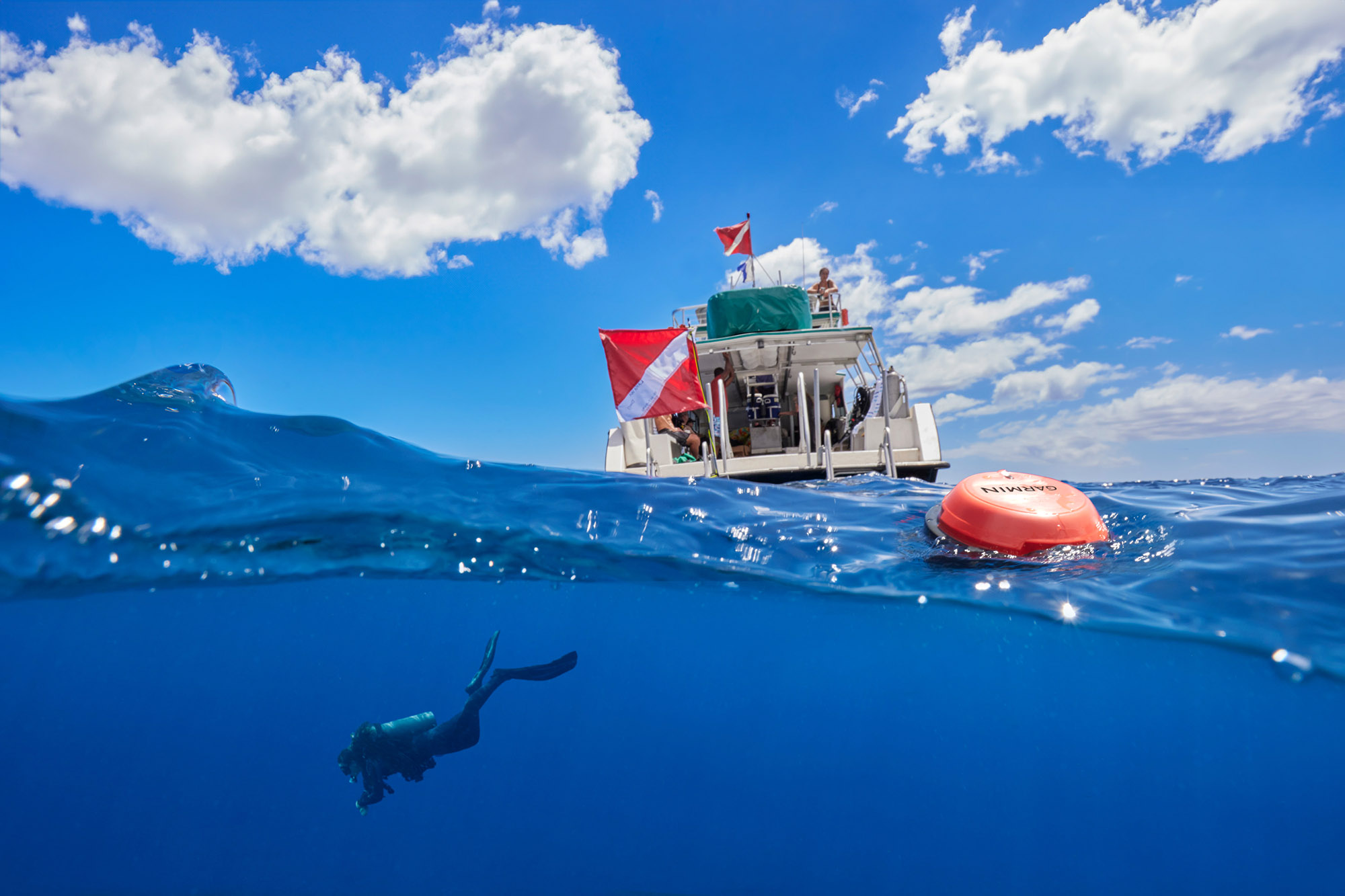Even in 2025, the primary methods for communicating with recreational scuba divers remain crude, at best. When it’s time for divers to return to their charter boat, the operators usually bang a metal pipe against the underwater hull, hoping that the clanging is loud enough to reach submerged clients. And the divers themselves still mostly rely on hand gestures to communicate with each other while underwater.
It’s past time to level up dive communications with modern technology, and Garmin claims it has found a solution with the Descent S1 Buoy it released this week.
This “smart buoy” relies on Garmin’s proprietary SubWave sonar networking. This customized tech allows divers to communicate through each other’s dive computers, as well as the buoy itself. The buoy can then relay messages to charter boat operators via Wi-Fi.
Combined with other Garmin tech, like sensors for monitoring divers’ remaining oxygen, it will give many scuba crews more knowledge than ever before, Ben Collins, senior product manager for Garmin’s dive category, told GearJunkie this week.
“What’s really exciting about the S1 is the safety and communication aspect,” Collins said. “I see this as an addition to what we already do as divers to remain safe. It’s another tool in the toolkit that enhances the experience and another way to improve your safety as a diver.”
A Years-Long Effort
Sonar isn’t exactly a novel technology. But figuring out how to use sonar for text-based communication via dive computers has taken Garmin several years to perfect.
The tech brand has been improving diver safety since at least 2020. That’s when it released tank pressure monitors that allow divers to monitor oxygen levels from their dive computers. A few years later, in 2023, Garmin added a new feature to its diving app, giving divers the ability to send and receive a half dozen pre-set messages.
With the smart buoy, the brand has now made the final connection: the charter boat crew above water. According to Collins, it wasn’t an easy problem to solve, as no single technology can pass the air–water barrier and offer the range needed for diving trips. But the Descent S1 Buoy exists both in the water (where sonar works effectively) and out of the water (where Wi-Fi transmits the sonar messages to boat crews).
Descent S1 Buoy: Details
Arguably the most important feature of the smart buoy (though by no means the only one) is the messaging that it offers between divers and the boat crews. Specifically, the buoy allows for about 40 pre-set messages. Many of these pre-set messages also have several possible responses.
For example: If a diver sets an anchor for the boat, they can use the Garmin dive computer on their wrist to tell the boat they’re finished with the task. Moreover, the diver can send the boat details about water current, temperature, visibility, and other data.
At any given moment, divers can send messages about where they are, how they’re doing, and their remaining decompression time. Divers with Garmin’s Descent dive computer can communicate with another up to 100 m away. (This range can change, however, depending on ocean conditions.)
That same range limit applies to the distance from the buoy itself. As long as divers stay within that range, boat operators can receive data about their tank pressure, location, depth, and more.
Wi-Fi range may vary, but boat crews will want to stay within about 60 m of the buoy, though using a smart device with an antenna may increase the Wi-Fi’s range, according to Collins.
In an emergency, boat crews can notify the whole team to return to the surface. If a diver is unsure where to go, their dive computer can show the distance and direction of the buoy, and how to get back to it. Once back on the surface, the buoy will even provide heat maps that show the paths of each diver’s underwater explorations.
Pricing and Compatibility
The Descent S1 Buoy costs $2,500. At just 2 pounds, it has an IPX8 water rating to 10 m. Its battery will last for about 15 hours, which is usually enough for a weekend dive trip, according to Garmin.
But divers need more than just the buoy to use all its features. Each diver will need one of Garmin’s two compatible dive computers (Descent Mk3i or Descent X50i) to connect to the buoy. And for real-time monitoring of tank pressure, each diver will also need a Descent T2 Transceiver. As for the boat crews, they simply need to download the Garmin diving app on their iOS or Android smartphones.
According to Collins, the buoy is the first time that this level of communication has reached the consumer diving market “at an approachable price and size.” He also believes that Garmin has integrated the tech into dive computers “in a meaningful way.” Over time, it’s possible for Garmin to add more preset messages and functionality through software updates.
“We’re actively looking at feedback and expect to expand this over time,” Collins said. “I’m really excited about other ways that people use this that maybe we didn’t expect.”
Read the full article here





